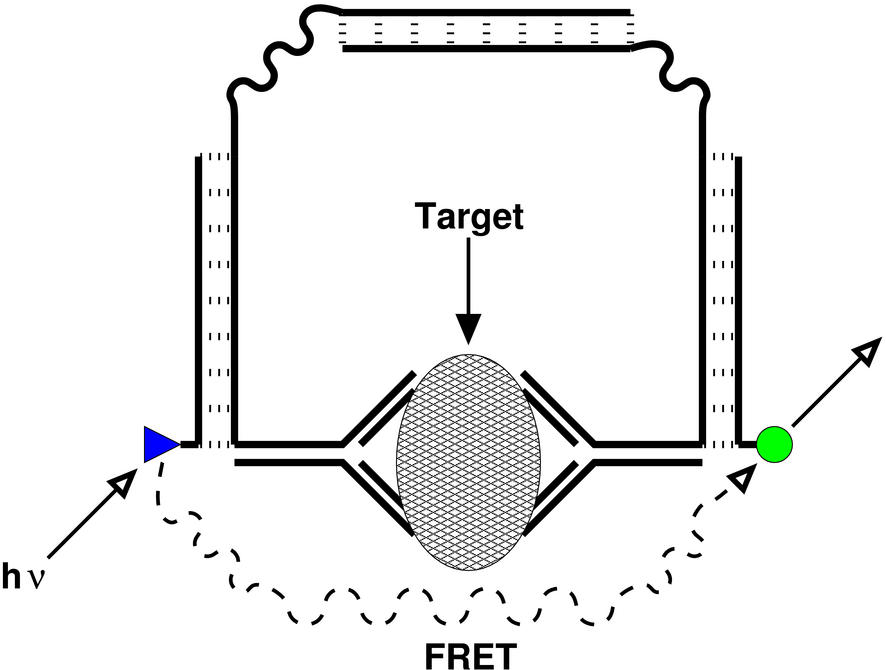Rod-Tether Nanoprobes
|
Ilya Lyakhov,
Thomas D. Schneider,
and
Danielle Needle
|
|
Imagine shrinking the
ELISA assay
to a single molecule!
|
|
|

|

|
|
(Click on these two images for larger versions.)
(Note: If the images are huge,
your browser has failed.
You can use
Firefox,
Mozilla
or
SeaMonkey
instead.)
|
|
Benefits of the Rod-Tether Nanoprobes
Rod-Tether Nanoprobes
- are simple because there is only one reagent.
Complicated and expensive
microfluidic chips
are eliminated.
- reduce
ELISA, Southern, Northern and Western assays
to single molecules
- are fast because only a single molecular reaction is
required to detect a target molecule
- have exceptionally low cost per device
- have many options for technical improvements
- could be used in the clinic to instantaneously
analyze patient's blood and detect genetic diseases
- could be used to detect biowarfare agents instantaneously
Informal description of the Invention:
Rod-tether Nanoprobes are devices consisting of a rigid molecular rod
with a flexible molecular tether attached at each end that can be used
to detect and/or modify molecules.
Each tether tip has a functional group,
such as an antibody or oligonucleotide,
that recognizes a target molecule.
In addition, one tip carries a donor fluorophore and the other
carries an acceptor fluorophore.
The fluorophores
form a pair for Forster Resonance Energy Transfer (FRET).
In the absence of the target molecule,
the rod keeps the tether arms apart most of the time,
while in the presence of the target molecule,
both
recognizers bind to the target.
This holds the donor and acceptor
fluorophores close together.
Illumination with light
excites the donor
and the
energy is transferred by
FRET to the nearby acceptor, which emits a detectable signal.
By reducing an ELISA-like assay entirely to the molecular level,
complex macroscopic or microfluidic washing and pumping
systems can be eliminated.
Rod-tether Nanoprobes
can detect a wide variety
of clinical and biowarfare reagents.
The nanoprobes
can also be used to rapidly and simply
detect, modify and/or destroy
endogenous molecules such as proteins and mRNA
involved in a broad range of diseases.
The simplest ssDNA-detecting nanoprobe has been created.
Resources are sought to develop a variety of prototypes.
See also
MedusaTM Sequencing!
Figure 18 of the patent is not clear.
Here is the figure in color.


Schneider Lab
origin: 2006 Jan 10
updated: 2014 Apr 28





![]()

![]()